Order Coleoptera Subfamily Cicindelinae Rank Species | Family Carabidae Genus Cicindela Higher classification Cicindela | |
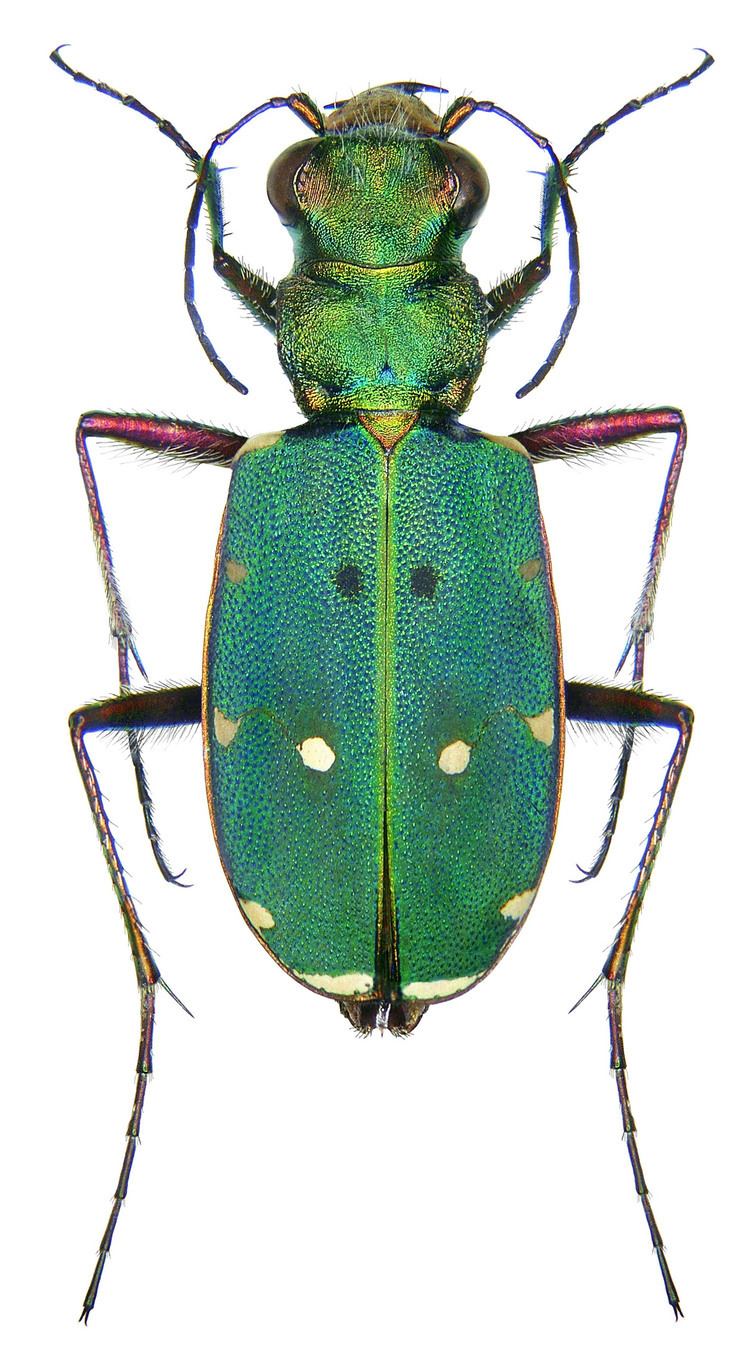 | ||
Similar Beetle, Tiger beetle, Cicindela, Insect, Ground beetle | ||
Cicindela campestris feldsandlaufk fer green tiger beetle
Cicindela campestris, commonly called the green tiger beetle is a widespread Eurasian species of tiger beetle. It is the type species of the large genus Cicindela.
Contents
- Cicindela campestris feldsandlaufk fer green tiger beetle
- Cicindela campestris
- Adult
- Behaviour
- Larva
- Distribution
- Subspecies
- In culture and art
- Ecology
- References

Cicindela campestris
Adult
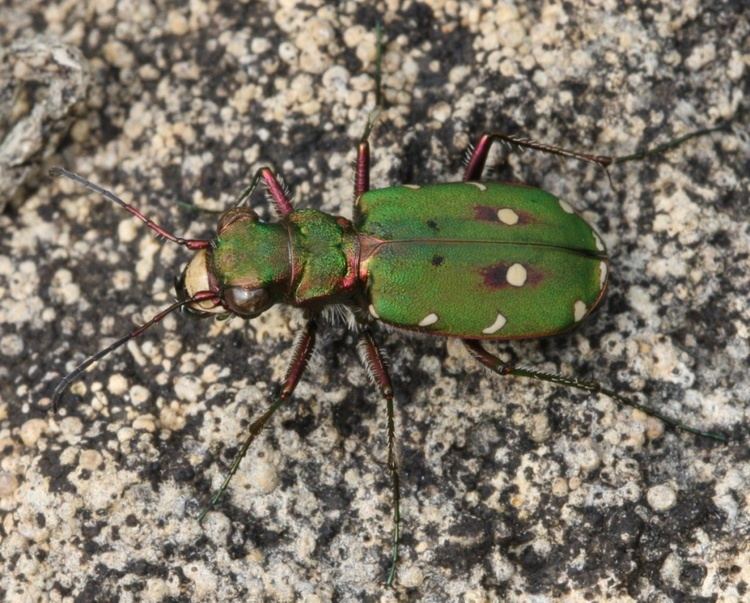
Adults are typically 12–15 millimetres (0.47–0.59 in) long. The elytra and thorax are green, varying in tone from light to dark, spotted with cream-coloured patches, and in bright sunlight are somewhat iridescent. The eyes are blackish; the legs are brown with whitish hairs. The antennae are long and straight, not clubbed.
Behaviour
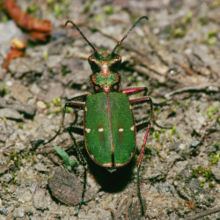
The adults are sun-loving. They live in places with dry soils (sandy or chalky), mostly between May and October at the latitude of Britain. Like other tiger beetles, they run fast on their long legs and are most often seen on bare ground, in Britain typically on heather moorland. They can fly fast, making a loud buzzing noise. It can run at speeds of 60 cm per second.
Larva
The larvae are carnivorous. They dig burrows from where they ambush ground-living insects such as ants.
Distribution
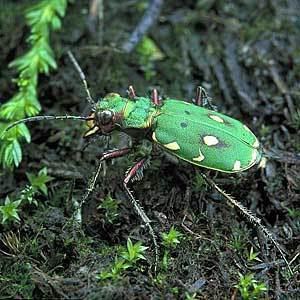
Cicindela campestris is distributed across Europe from Spain in the southwest to Finland in the northeast. Most records are from the UK, Germany, Austria and the south of Sweden. In Britain, records are mainly from dry sandy or heathy areas such as the heathlands of Surrey, Hampshire and Dorset, and the mountains and moorlands of the Scottish Highlands.
Subspecies
The species is divided into several subspecies:
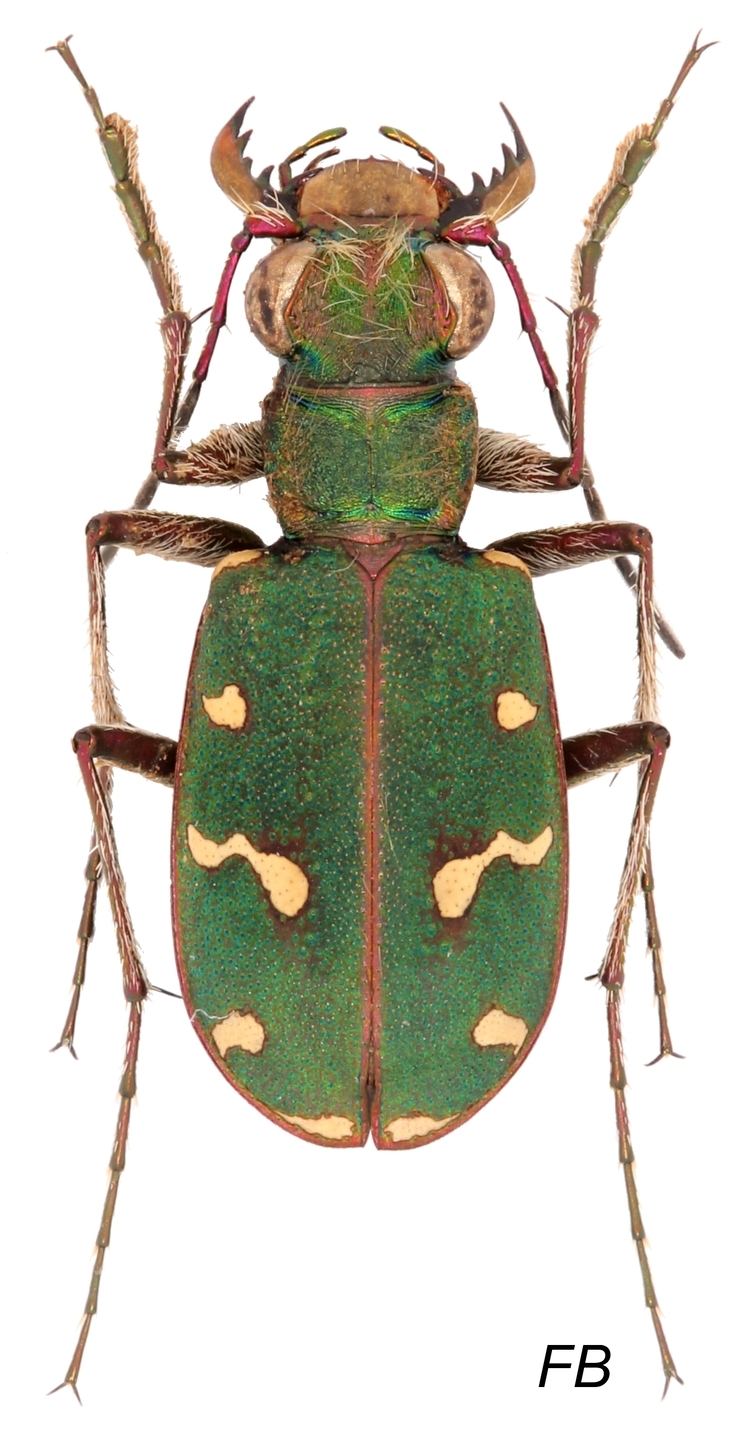
In culture and art
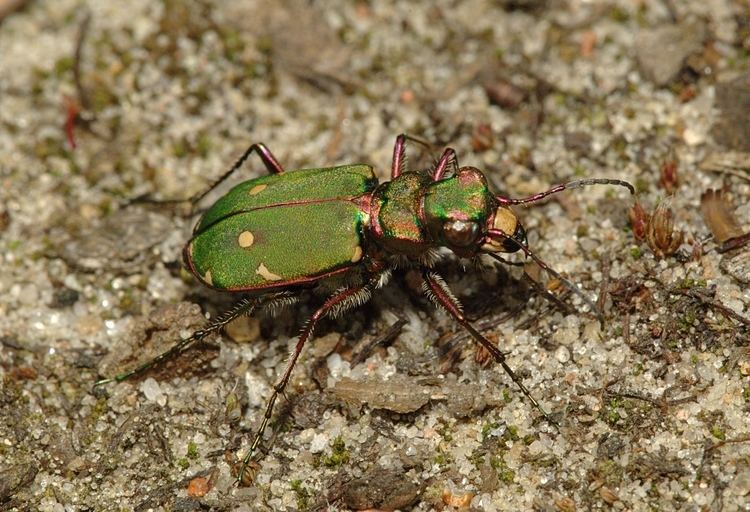
A piece of modern classical music by Stephen Andrew Rawle for clarinet, violin and piano is entitled Opus 43, Cicindela Campestris.
Ecology
The mollicute bacterium species Entomoplasma freundtii (Entomoplasmatales, Entomoplasmataceae) can be isolated from the green tiger beetle.
